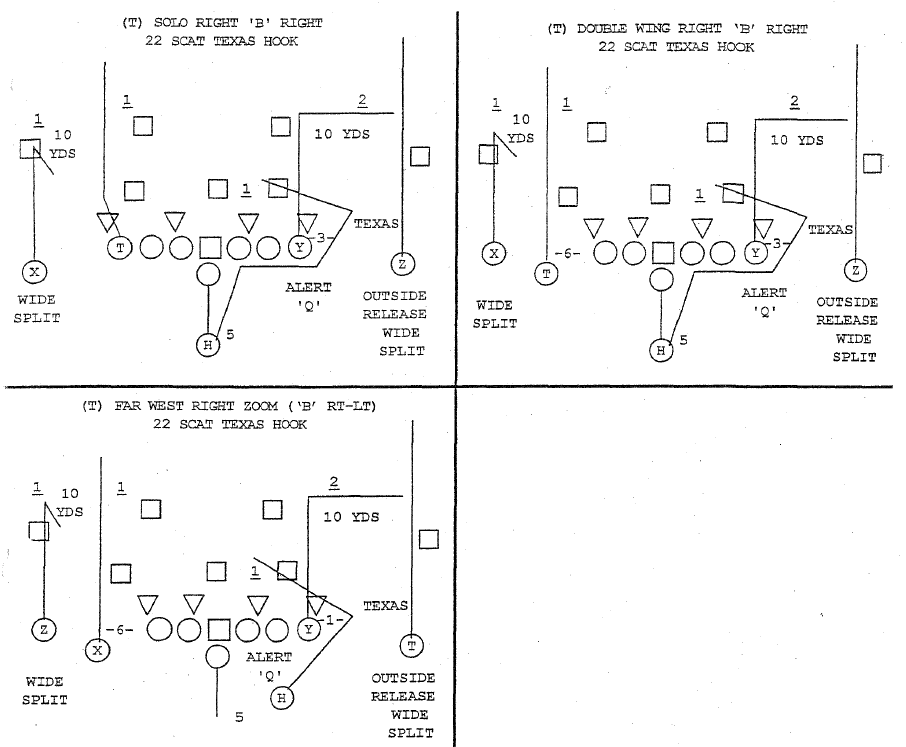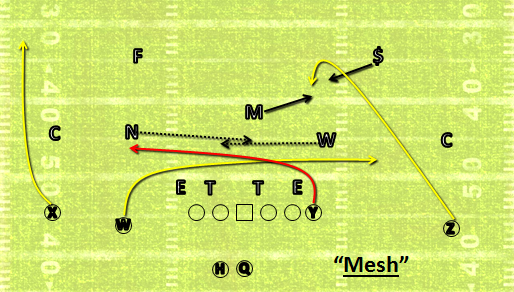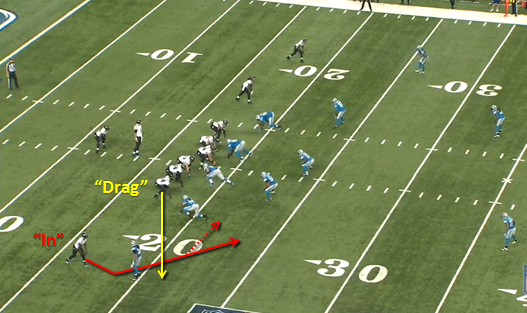In this play, each lineman down blocks (seals off the back side) while the backside guard pulls to the play side and attacks the SAM linebacker. It's a demanding assignment for the guard, who needs to be quick-footed and athletic to get around to the play side and then attack the linebacker in space. Some offenses also use a fullback as a lead blocker to kick out the end man on the line of scrimmage (E; below). Finally, to make Power O work, teams need a back who can explode through the hole with timing and the ability to cut off of his blocks.
Here's a look at it on the chalkboard:

When it all comes together, Power O has a number of advantages. It's good against a variety of defensive looks, it can be used on multiple downs and distances, and it's great for setting up high-percentage play action passes later in the game. The Ravens even used it from the shotgun at times, as in the play below:
Like its name implies, Power O is just good, old-fashioned power football. No misdirection, just smart blocking and patient running.
Outside Resources
1) Explanation and Cut-ups of the "Power O" Run Play
2) Want to Learn the Base NFL Run Game?
3) NFL 101: Introducing the Power Running Game
4) The Coach's Corner: Utilizing New Power-O Innovations in the Spread Offense
5) The "Power O" Play
6) Playbook: Wisconsin's 'Power O' Scheme
7) Power "O"
8) One Back Power Game: Separating the Defense
9) More "Bang" for your Buck with the Power Scheme
10) Football Fundamentals: Power O Blocking Primer
11) Football Fundamentals: Power O Blocking (Part II)
12) POWER Variations Series
13) Power Variations #2 - Super Power
14) Power Variations #3 - 1 Back Power
15) Power Variations #4 - Power Arc
16) Football Fundamentals: RB and HB Blocking
17) Football Fundamentals: The Many Iterations of Power O



























